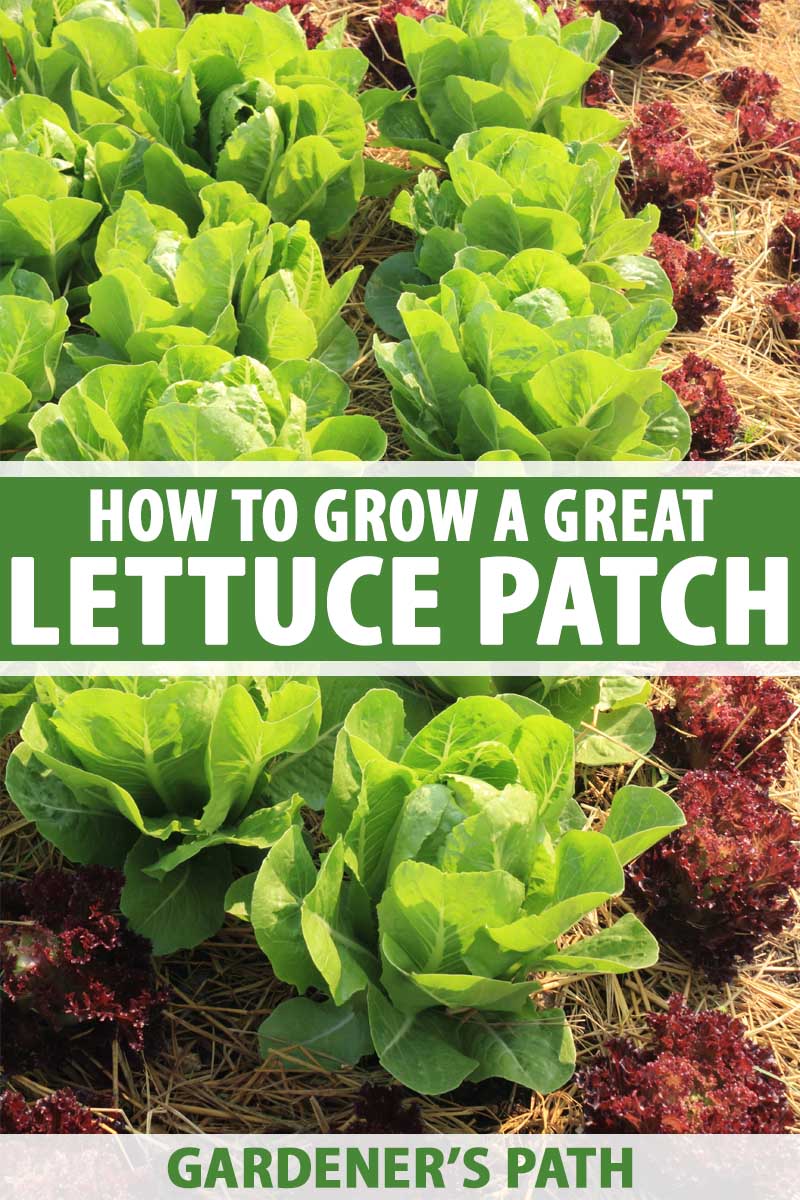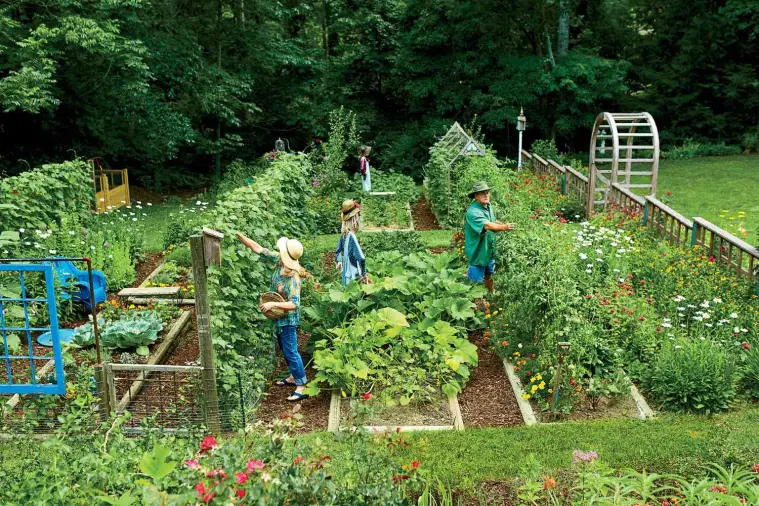The best vegetables to grow in a garden include tomatoes, lettuce, carrots, and green beans. These choices are popular due to their simplicity and adaptability to various climates, including Austin, Texas.
Embarking on a gardening journey can be both rewarding and sustainable, especially when incorporating the top vegetables for home cultivation. Imagine the convenience of picking fresh produce from your backyard! Growing your own vegetables not only offers health benefits but also reduces grocery bills.
Table of Contents
Tomatoes, with their variety and ease of growth, consistently rank as garden favorites. Leafy greens like lettuce provide quick harvests and are perfect for continuous sowing. Root vegetables such as carrots are low-maintenance and offer substantial yields. Lastly, green beans are versatile, productive, and require minimal space, making them ideal for gardeners with limited areas. Carefully chosen for their resilience and productivity, these vegetables are suited for beginners and experienced gardeners alike, ensuring a flourishing garden full of fresh, home-grown produce.

Credit: http://www.creativevegetablegardener.com
Introduction To Vegetable Gardening
Gardening enthusiasts and eco-conscious foodies alike are embracing the joy of vegetable gardening. Transforming a patch of land into a flourishing garden provides a sense of achievement and an opportunity to control the quality and variety of the vegetables you consume. Whether you’re keen on reducing your carbon footprint or simply yearning for the taste of home-grown tomatoes, starting a vegetable garden is a step towards a healthier lifestyle. This segment will delve into the fundamentals of vegetable gardening – preparing the groundwork for a verdant and productive space.
- Freshness and Flavor: Home-grown veggies are unmatched in their freshness and taste.
- Healthier Choices: Cultivating your garden encourages a more nutritious diet, free from harmful pesticides.
- Economic Savings: Save on grocery bills by growing vegetables that can often be costly to purchase.
- Eco-Friendly: Reduce your environmental impact by cutting down on food miles and packaging.
- Exercise and Wellbeing: Gardening is a rewarding hobby that promotes physical activity and mental health.
- Educational Experience: Learn more about where your food comes from and how it grows.
- Customization and Variety: Grow unique and heirloom varieties not commonly found in stores.
Selecting the right location and preparing your soil are pivotal steps in embarking on your vegetable gardening journey. Here’s a straightforward checklist to ensure you’re on track:
- Assess the amount of sunlight your garden area receives daily.
- Choose a spot with good drainage and access to water.
- Test the soil pH and nutrient levels and amend accordingly.
- Decide on the size of your garden based on time and resources.
- Consider the types of vegetables that thrive in your regional climate.
- Plan for crop rotation and companion planting to promote a healthy garden.
- Prepare your soil by tilling and adding organic matter.
- Start with easy-to-grow vegetables if you’re a beginner.
- Equip yourself with the necessary tools and knowledge.
Best Vegetables To Grow For Beginners
Embarking on your first gardening adventure can be both exciting and daunting. Choosing the right vegetables for a bountiful harvest can make all the difference. This section will guide beginners through the must-have vegetables that are not just easy to grow but are also nutrient-rich and versatile, ensuring a rewarding gardening experience.
Lettuce: The Leafy Staple
Lettuce is a fast-growing crop making it an ideal choice for those eager to see quick results. This leafy green can be harvested repeatedly and grows well in both cool and warm weather. Here’s how to start:
- Sow seeds directly into the soil or start in containers.
- Keep the soil moist but not water-logged.
- Harvest leaves as needed, encouraging new growth.
Tomatoes: Versatile And Popular
Tomatoes are a staple in many kitchens, and nothing compares to homegrown flavors. This versatile plant thrives in full sunlight and regular watering. To get started:
- Choose a sunny spot for planting.
- Use stakes or cages to support the growing plant.
- Water consistently at the base to avoid leaf diseases.
Carrots: Rooted In Simplicity
For gardeners looking for a low-maintenance vegetable, carrots are perfect. They grow best in loose, sandy soil that allows for straight growth. Here are simple steps to grow carrots:
- Sow seeds directly into the ground at a shallow depth.
- Thin seedlings to prevent overcrowding.
- Water evenly to maintain soil moisture.
Green Beans: The Climbing Crop
Green beans are both easy to grow and productive. They come in two varieties: bush and pole. Pole beans need climbing support, while bush beans spread out on the ground. To cultivate green beans:
- Plant in well-draining soil after the threat of frost has passed.
- Provide a trellis for pole varieties.
- Harvest regularly to promote new pods to form.
Maximizing Small Spaces For Your Vegetable Garden
Limited outdoor space doesn’t mean you have to sacrifice your dream of a lush vegetable garden. In fact, with creative arrangements and the selection of the right crops, even the smallest of balconies, patios, or urban backyards can transform into a bountiful oasis. Explore how to combat space constraints and grow a thriving variety of vegetables right where you are.
Vertical Gardening With Pole Beans And Tomatoes
Take advantage of vertical real estate by growing plants that naturally reach for the sky. Pole beans and tomatoes are prime candidates for vertical gardening, requiring only a trellis or support system to climb. Utilizing these techniques not only saves space but also promotes air circulation and reduces the likelihood of disease.
- Pole Beans: Install a sturdy trellis and watch your beans soar. Select a sunny spot and ensure your soil is rich in organic matter.
- Tomatoes: Opt for indeterminate varieties that continue to grow throughout the season. Provide tomato cages or stakes for support.
Optimal Layouts For Square Foot Gardening
Square foot gardening is a boon for space-saving enthusiasts. The method encourages the division of the garden area into small square sections, making it easier to manage and minimizing wasted space.
- Plan Your Space: Create a grid of 1×1 foot squares on your growing area.
- Maximize Each Square: Plant vegetables based on their size at maturity to avoid overcrowding.
Container Gardening: Vegetables That Thrive In Pots
If in-ground planting isn’t an option, container gardening can be just as effective. Many vegetables will thrive in pots, given the right conditions. Ensure adequate drainage and choose containers sizable enough to accommodate the root growth of your chosen vegetables.
| Vegetable | Container Size |
|---|---|
| Peppers | 2-gallon |
| Salad Greens | 1-gallon |
Choosing Dwarf Or Bush Varieties For Compact Areas
When space is at a premium, choosing dwarf or bush plant varieties can make a significant difference. These plants occupy less space while still providing an ample harvest. They are perfect for small garden plots or raised beds, ensuring you get the most out of your precious garden space.
- Dwarf Peas
- Bush Beans
- Dwarf Tomatoes

Credit: http://www.thisoldhouse.com
Seasonal And Continuous Harvests
Gardening enthusiasts often strive for both variety and continuous bounty in their vegetable plots. Understanding the rhythm of seasonal and continuous harvests can transform your gardening experience. Seasonal veggies provide abundant yields at specific times, while continuous harvests allow you to enjoy fresh produce throughout the growing season. Here’s how to cultivate a garden that offers the best of both worlds.
Fast-growing Picks: Radishes And Lettuce
Fast-growing vegetables like radishes and lettuce are perfect for those looking for a quick yield. Radishes can be ready to harvest in as little as four weeks, while lettuce leaves can be snipped for salads within a month as well. Let’s break down why these two are powerhouses in the fast-growing category:
- Radishes are easy to cultivate, grow well in cooler temperatures, and can be interplanted among slower-growing veggies to maximize space.
- Lettuce, with its shallow roots, is ideal for containers and small spaces, and its multiple variants ensure a diverse and tasty harvest.
Succession Planting For Constant Supply
Succession planting is an effective technique for keeping your vegetable garden productive. By planting new seeds at regular intervals, you ensure a continuous supply of fresh produce. Here’s an easy strategy:
Start by planting a batch of seeds, such as carrots or beets, and follow up with another planting a few weeks later. By repeating this process throughout the growing season, you’ll have a steady stream of vegetables maturing at different times.
Fall Vegetables: Planning For The Cooler Months
As summer wanes, it’s time to turn your attention to fall vegetables. Hardy options like kale, brussel sprouts, and collards can sustain lower temperatures. These crops often develop better flavor after a frost, making them perfect for autumn harvesting. A well-planned fall garden allows you to extend your gardening season and enjoy the fruits of your labor well into the cooler months.
| Fall Vegetable | Sowing Time | Harvest Time |
|---|---|---|
| Kale | Mid-summer | Late fall |
| Brussel Sprouts | Early summer | After first frost |
Advanced Vegetable Gardening
Taking your gardening game to the next level, Advanced Vegetable Gardening unlocks a new realm of diversity and productivity for your backyard plot. From the rich tapestry of heirloom varieties that have been passed down through generations to the modern marvels of hybrid vegetables, embracing these options offers the adventurous gardener a chance to cultivate a truly unique and bountiful garden. Additionally, learning to incorporate perennials like asparagus and rhubarb not only adds to the visual appeal but also to the long-term sustainability of your vegetable garden.
Heirloom Varieties For Unique Gardens
Heirloom vegetables are like the family jewels of the garden, each with its own story and distinctive flavor. Planting heirlooms ensures genetic diversity and preserves the cultural heritage of gardening. Here are some standout heirloom varieties:
- Brandywine Tomato: Renowned for its rich, full flavor, this tomato is a must-have in any heirloom garden.
- Moon and Stars Watermelon: Aptly named for its celestial-patterned rind, it’s as delicious to eat as it is beautiful to behold.
- Dragon Carrot: Add a splash of color with these purple-hued carrots, known for their spicy-sweet taste.
Hybrid Vegetables For Increased Yield
Disease resistance, greater productivity, and uniformity are just a few of the advantages that hybrid vegetables bring to the table. Hybrids are bred to enhance specific traits which can make your garden not only more bountiful but also easier to manage. Below are a few hybrids that could revolutionize your garden:
- Big Beef Tomato: Offers fantastic disease tolerance and an abundance of large, flavorful fruits.
- Better Boy Pepper: A vigorous plant known for its large and tasty bell peppers.
- Gold Rush Zucchini: A high-yielding summer squash with a delightful taste and texture.
Incorporating Perennial Vegetables Like Asparagus And Rhubarb
Perennial vegetables are the gifts that keep on giving, year after year. Unlike annuals, these hardy staples require planting only once, reducing garden labor and providing a consistent supply of produce. For example:
| Vegetable | Planting Tips | Harvest Time |
|---|---|---|
| Asparagus | Plant crowns in early spring in well-drained soil. | Harvest spears in the second spring after planting. |
| Rhubarb | For best results, plant rhizomes in early spring. | Pick stalks once they reach 12 to 18 inches long. |
Integrating perennials into your garden not only enhances productivity but also contributes to soil health and biodiversity.

Credit: http://gardenerspath.com
Caring For Your Vegetable Patch
Cultivating a bountiful vegetable garden requires more than just planting seeds and waiting for a harvest. To ensure a plentiful supply of fresh and mouth-watering vegetables, gardeners must dive into the art of nurturing their patches. With proper care, your garden can thrive, producing vibrant veggies that not only grace your dinner table but also bring joy and a sense of accomplishment. Let’s explore some essential tips for maintaining a healthy and productive vegetable patch.
Watering And Feeding Your Plants
Consistent watering and timely feeding are crucial to the success of your vegetable garden. Vegetables need a steady supply of moisture to grow properly, which may mean watering daily during hot or dry spells. Employing a drip irrigation system or soaker hoses can provide deep watering that encourages robust root growth without wasting water.
Feeding your vegetables ensures they receive the nutrients necessary to develop. A balanced, organic fertilizer applied every few weeks can support healthy growth, but always follow package instructions regarding quantity and frequency to prevent over-feeding.
- To conserve water, consider mulching around your plants to retain moisture.
- Pay attention to the specific watering needs of each vegetable; some may require more or less.
- Perform a soil test to determine nutrient needs and adjust your feeding schedule accordingly.
Managing Pests And Diseases Organically
Organic pest and disease management begins with prevention. Healthy, vigorous plants are less susceptible to issues. Encourage beneficial insects like ladybugs and lacewings that prey on common garden pests by planting flowers they love.
For specific problems, turn to organic solutions like neem oil, insecticidal soap, or DIY remedies such as garlic and chili sprays. Regularly check your plants for signs of trouble and act promptly to prevent spread.
Practice good hygiene by removing diseased foliage immediately and sterilizing gardening tools to avoid cross-contamination.
Companion Planting To Boost Health And Productivity
Companion planting is a time-tested method that enhances the health and yield of your vegetable patch. This practice involves grouping plants that offer mutual benefits, such as pest control or improved pollination.
| Vegetable | Good Companions | Benefits |
|---|---|---|
| Tomatoes | Basil, Marigold, Garlic | Repels pests, improves flavor |
| Carrots | Chives, Rosemary, Sage | Deters carrot fly, enhance growth |
| Peppers | Basil, Spinach, Parsley | Increase vitality, attract beneficials |
Consider diversity in your garden as a strategy to create a balanced ecosystem, which can reduce the likelihood of outbreaks. Plus, you might find your vegetables taste even better!
Harvesting And Enjoying Your Bounty
The moment has arrived. You’ve nurtured your garden with care, and now it’s time to reap the rewards. Harvesting your vegetables is just as crucial as the planting and growing stages. Let’s explore how to harvest your bounty at the pinnacle of freshness, store your vegetables to maximize longevity, and transform your harvest into creative and delicious meals.
Tips For Harvesting Vegetables At Peak Freshness
- Learn the signs of maturity: Each vegetable has unique indicators such as color, size, and firmness that signal the perfect time for picking.
- Use the right tools: Keep tools like pruning shears and garden knives clean and sharp to make clean cuts that won’t harm the plants.
- Harvest in the morning: Vegetables are often the crispest and juiciest in the cool morning hours.
- Handle with care: Be gentle to avoid bruising your vegetables, preserving their quality and shelf life.
Storing Your Harvest For Longevity
Preservation is key to ensuring your vegetables stay fresh and flavorful after harvesting. Here are several methods to extend the life of your homegrown produce:
| Vegetable | Storage Method | Expected Shelf Life |
|---|---|---|
| Leafy Greens | Refrigerate in a plastic bag with a paper towel | 1-2 weeks |
| Root Vegetables | Store in a cool, dark place | Several months |
| Tomatoes | Keep at room temperature away from sunlight | 1 week |
Creative Recipes To Savor Your Homegrown Vegetables
Get innovative in the kitchen by trying new recipes that highlight the flavors of your garden vegetables. Here are some recipe ideas to get you started:
- Stuffed Bell Peppers with quinoa, black beans, and corn for a hearty meal
- Fresh Cucumber Salad tossed with dill, yogurt, and lemon for a refreshing side
- Zucchini Noodles served with homemade tomato sauce for a light twist on pasta night
As you savor each bite, you’ll not only enjoy the fruits of your labor but also the connection to your food that only comes from growing it yourself.
Frequently Asked Questions On Best Gardening Vegetables
What Are The Best Vegetables To Grow In A Garden?
The best vegetables for garden growing include tomatoes, carrots, lettuce, green beans, peppers, cucumbers, and spinach.
What Are The 10 Easiest Vegetables To Grow?
The 10 easiest vegetables to grow include lettuce, radishes, carrots, peas, spinach, green beans, cucumbers, zucchini, cherry tomatoes, and bell peppers.
What Garden Vegetables Produce The Most?
Tomatoes, cucumbers, and leafy greens like lettuce and spinach often yield abundant harvests in home gardens.
What Is A Good Layout For A Vegetable Garden?
A good vegetable garden layout places tall plants at the back, mid-sized in the middle, with short or border plants at the front. Intersperse with pollinator attractors for a healthy, productive space.
Conclusion
Embracing the joy of gardening brings a bounty of benefits, and choosing the right vegetables makes all the difference. From the robust flavors of homegrown tomatoes to the crisp freshness of lettuce, each plant adds its unique charm to your table.
Remember to select varieties that thrive in your climate and to enjoy the process; your garden will reward you with a cornucopia of produce. Happy gardening and enjoy the fruits—or vegetables—of your labor!
(To learn about Vegetables & Fruits Container Gardening : https://bonsainurserybd.com/fruits-and-vegetables-for-container-gardening/)
